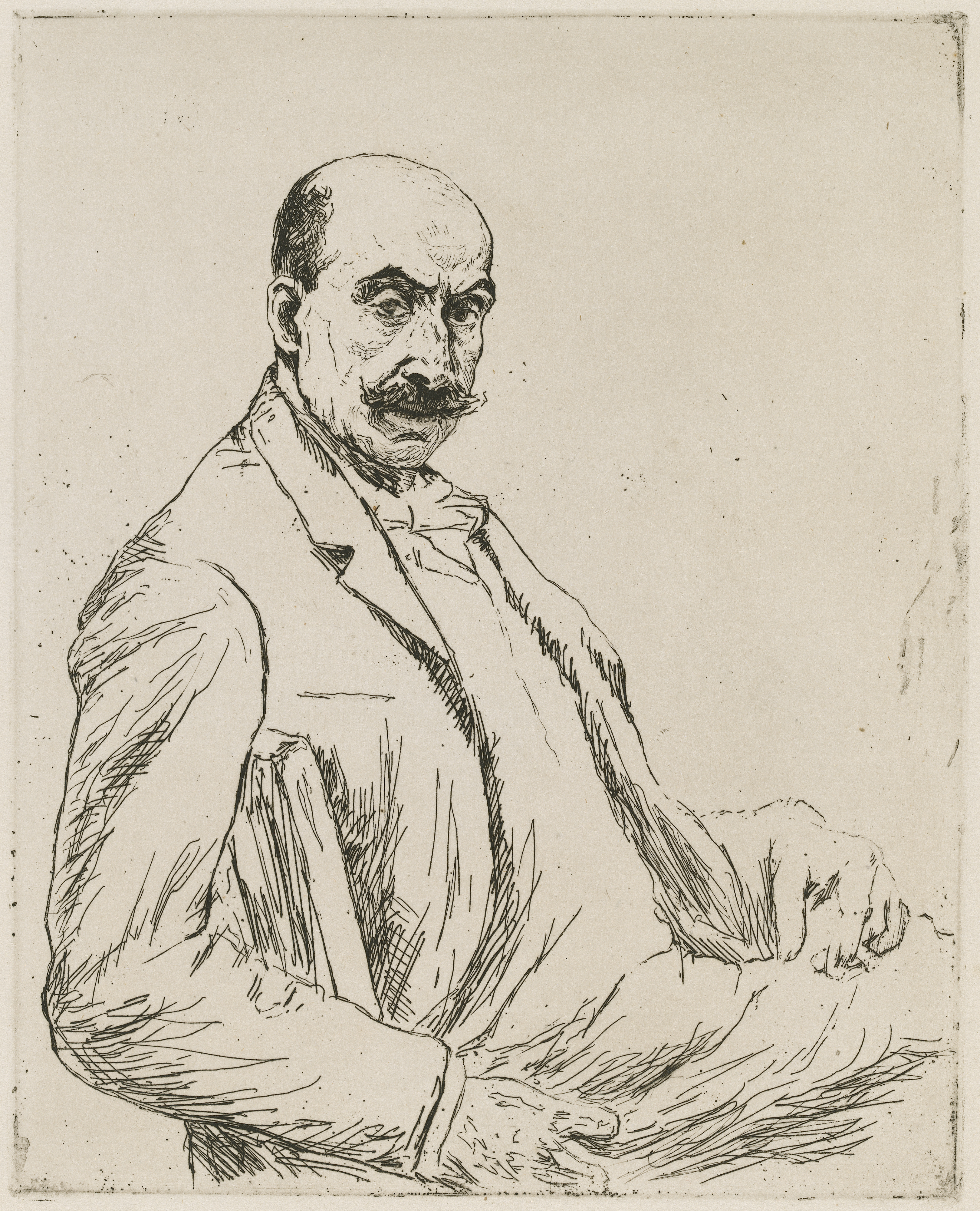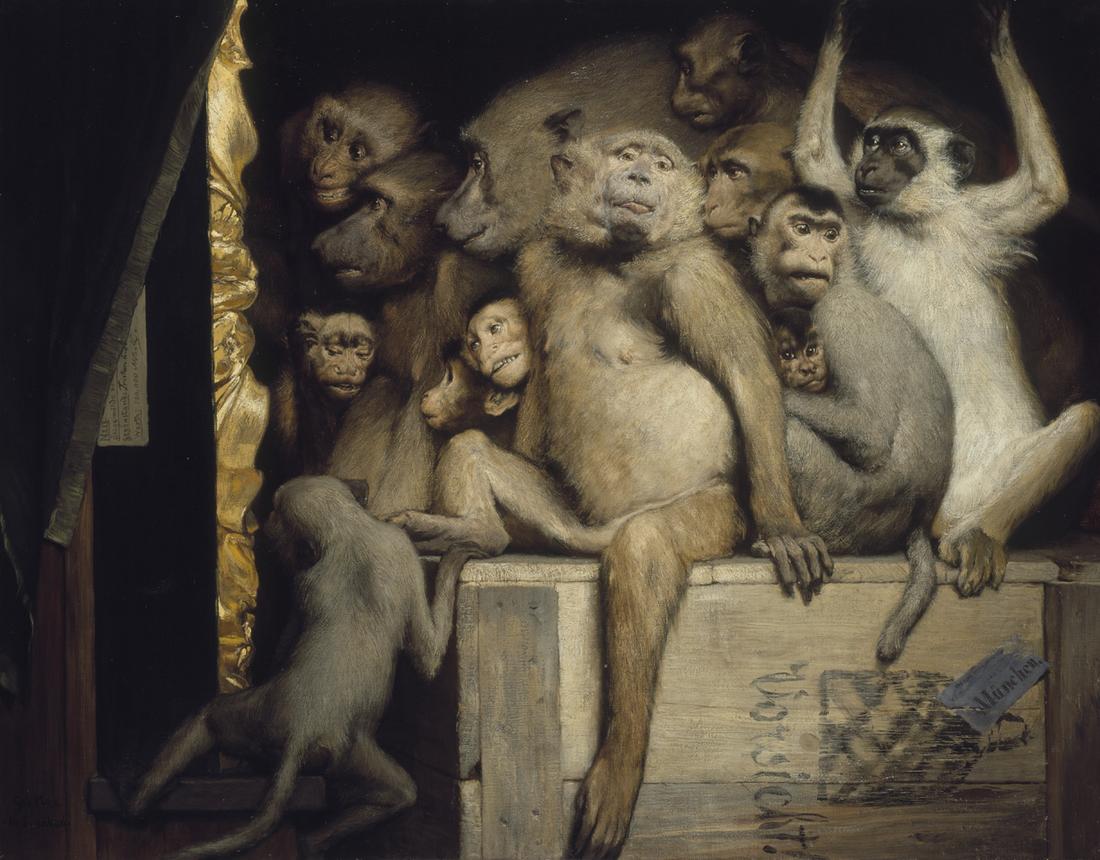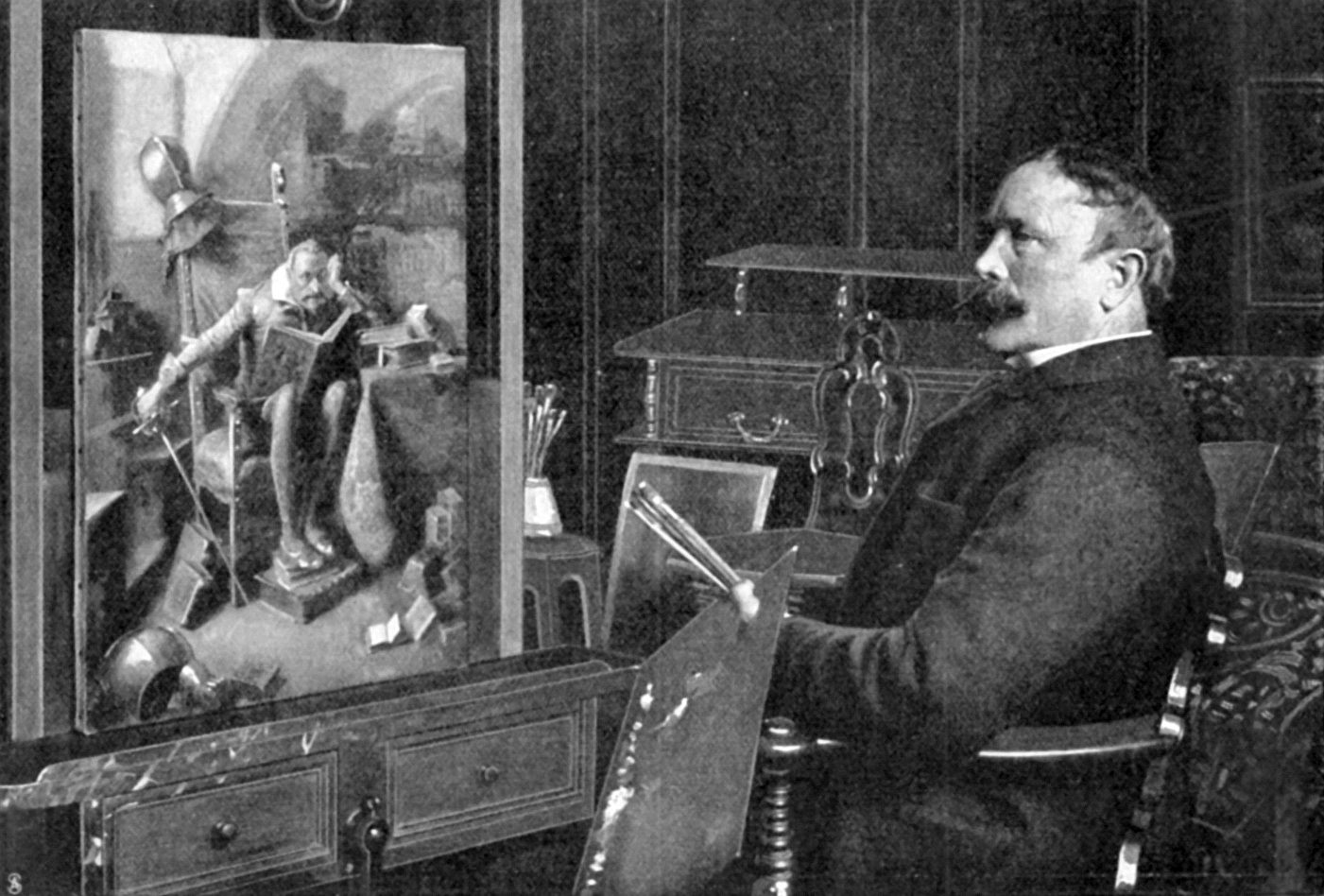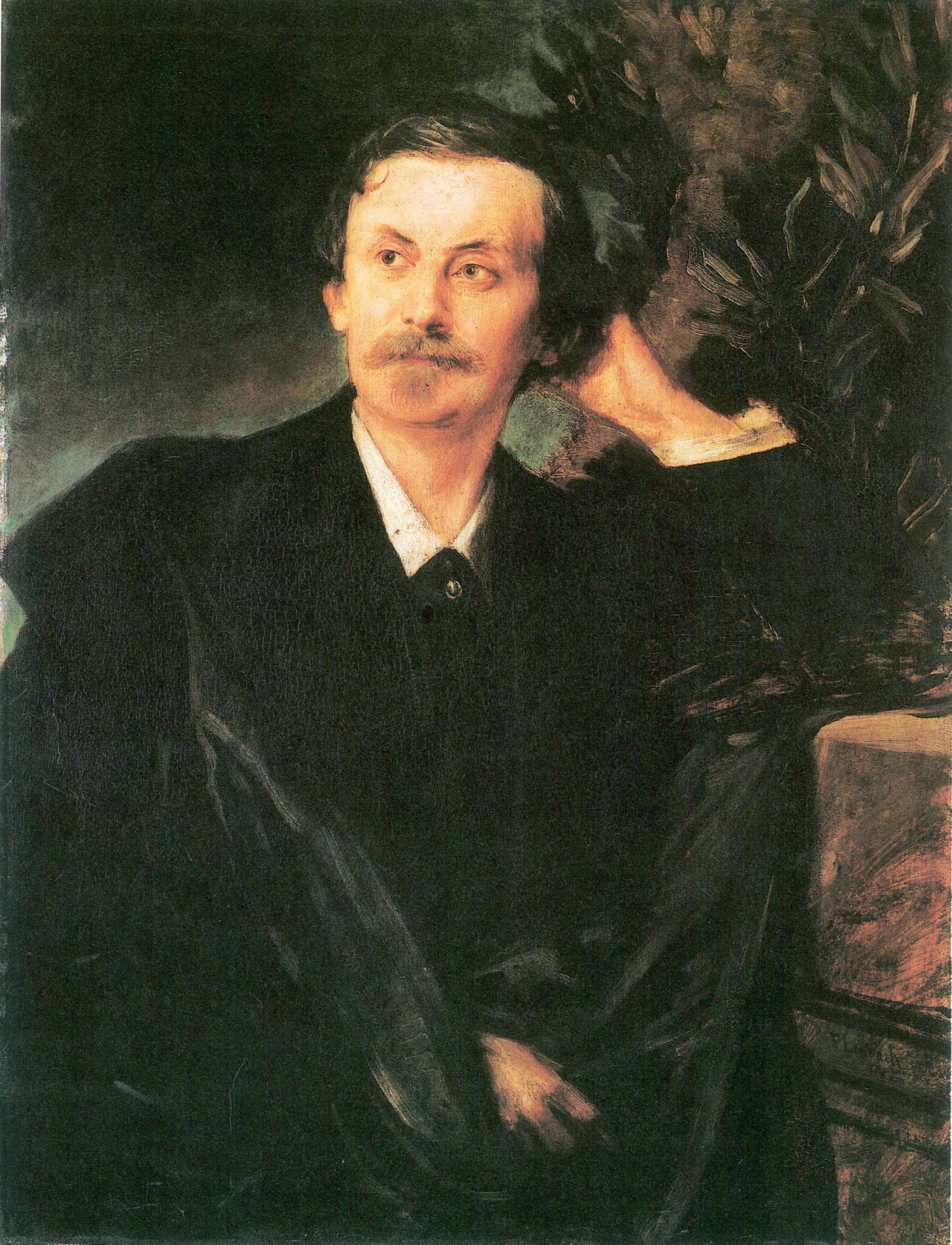|
Johann Sperl
Johann Sperl (3 November 1840 – 29 July 1914) was a German painter. Life Johann Sperl was born (as Johann Spörl) in Buch (now part of Nuremberg, Middle Franconia) in 1840 as an only child of Protestant parents. His father worked as an agricultural day laborer in the summer and as a wood worker in the winter. His mother worked as a housekeeper. The family lived in the next-door house of a homestead. School years In 1846 Sperl started attending school from which he graduated in 1854 as class winner. The local pastor assisted Sperl in securing an apprenticeship as a colorist. With the death of his father in 1856, Sperl became the sole provider of his sick mother and started an apprenticeship to become a lithographer. In the winter of 1858–59 Sperl fulfilled his wish of attending drawing courses at Nürnberger Kunstgewerbeschule. At this time the Kunstgewerbeschule was led by August von Kreling, a versatile history painter and sculptor. Sperl met the painters Rudolf Hirth ... [...More Info...] [...Related Items...] OR: [Wikipedia] [Google] [Baidu] |
Wilhelm Leibl
Wilhelm Maria Hubertus Leibl (October 23, 1844 – December 4, 1900) was a German realist painter of portraits and scenes of peasant life. Biography Leibl was born in Cologne, where his father was the director of the Cathedral choir. He was apprenticed to a locksmith before beginning his artistic training with the local painter Hermann Becker in 1861. He entered the Munich Academy in 1864, subsequently studying with several artists including Carl Theodor von Piloty. He set up a group studio in 1869, with Johann Sperl, Theodor Alt, and Rudolf Hirth du Frênes. At about the same time, Gustave Courbet visited Munich to exhibit his work, making a considerable impression on many of the local artists by his demonstrations of alla prima painting directly from nature. Leibl's paintings, which already reflected his admiration for the Dutch old masters, became looser in style, their subjects rendered with thickly brushed paint against dark backgrounds. Career In 1869, following Cour ... [...More Info...] [...Related Items...] OR: [Wikipedia] [Google] [Baidu] |
Rudolf Hirth Du Frênes
Rudolf Hirth du Frênes (24 July 1846, Gräfentonna, near Gotha - 1 May 1916, Miltenberg) was a German painter. Life His father was a notary. Du Frênes was his mother's maiden name, which he adopted for professional use. At the age of fifteen, he enrolled at the Academy of Fine Arts, Nuremberg, where he studied with August von Kreling. Four years later, on the recommendation of his teachers, he transferred to the Academy of Fine Arts Munich and became a pupil of Hermann Anschütz. The following year, he joined a class at the studios of Arthur von Ramberg and worked there until the latter's death in 1875. While in Ramberg's class, he met Theodor Alt, Johann Sperl and Wilhelm Leibl. In 1869, they came together to share a studio in Munich and formed the core of an artists' group that was later known as the "Leibl-Kreis" (Leibl Circle). Around 1880, began a lengthy study trip which took him to Holland, Belgium and France where he visited all the major studios, galleries and m ... [...More Info...] [...Related Items...] OR: [Wikipedia] [Google] [Baidu] |
Venice
Venice ( ; it, Venezia ; vec, Venesia or ) is a city in northeastern Italy and the capital of the Veneto Regions of Italy, region. It is built on a group of 118 small islands that are separated by canals and linked by over 400 bridges. The islands are in the shallow Venetian Lagoon, an enclosed bay lying between the mouths of the Po River, Po and the Piave River, Piave rivers (more exactly between the Brenta (river), Brenta and the Sile (river), Sile). In 2020, around 258,685 people resided in greater Venice or the ''Comune di Venezia'', of whom around 55,000 live in the historical island city of Venice (''centro storico'') and the rest on the mainland (''terraferma''). Together with the cities of Padua, Italy, Padua and Treviso, Italy, Treviso, Venice is included in the Padua-Treviso-Venice Metropolitan Area (PATREVE), which is considered a statistical metropolitan area, with a total population of 2.6 million. The name is derived from the ancient Adri ... [...More Info...] [...Related Items...] OR: [Wikipedia] [Google] [Baidu] |
Max Liebermann
Max Liebermann (20 July 1847 – 8 February 1935) was a German painter and printmaker, and one of the leading proponents of Impressionism in Germany and continental Europe. In addition to his activity as an artist, he also assembled an important collection of French Impressionist works. The son of a Jewish banker, Liebermann studied art in Weimar, Paris, and the Netherlands. After living and working for some time in Munich, he returned to Berlin in 1884, where he remained for the rest of his life. He later chose scenes of the bourgeoisie, as well as aspects of his garden near Lake Wannsee, as motifs for his paintings. Noted for his portraits, he did more than 200 commissioned ones over the years, including of Albert Einstein and Paul von Hindenburg. Liebermann was honored on his 50th birthday with a solo exhibition at the Prussian Academy of Arts in Berlin, and the following year he was elected to the academy. From 1899 to 1911 he led the premier avant-garde formation in Germany ... [...More Info...] [...Related Items...] OR: [Wikipedia] [Google] [Baidu] |
Arthur Von Ramberg
Arthur von Ramberg (4 September 1819 – 5 February 1875) was an Austrian-born painter who worked in Germany. Biography He was born in Vienna. He studied art at Hanover and early made a tour in Italy, Hungary and Styria. In 1840, he attended the university at Prague, while at the same time uniting the pursuit of art with his other studies. In 1842, he became a pupil at the Art Academy of Dresden under Julius Hübner, and among other early pictures produced his “Wedding of Dwarfs” after Goethe, and “The Emperor Henry I on His Hungarian Campaign.” In 1850, he went to Munich and executed a series of genres illustrating the works of Schiller. In 1860, he was appointed professor to the Art School in Weimar, and six years later took a similar position in the Academy of Fine Arts, Munich. His subsequent productions include “The Court of Frederick II in Palermo”; and, among his genres, most notable are his “Hermann and Dorothea” after Goethe; and “Luise,” after the po ... [...More Info...] [...Related Items...] OR: [Wikipedia] [Google] [Baidu] |
Gabriel Von Max
Gabriel Cornelius Ritter von Max (23 August 1840 – 24 November 1915) was a Prague-born Austrian painter. Biography He was born Gabriel Cornelius Max, the son of the sculptor Josef Max and Anna Schumann. He studied between 1855 and 1858 at the Prague Academy of Arts with Eduard von Engerth. His studies included parapsychology ( somnambulism, hypnotism, spiritism), Darwinism, Asiatic philosophy, the ideas of Schopenhauer, and various mystical traditions. The spiritual-mystical movement was emphasized by the writings of Carl du Prel, and the Munich painter Albert Keller was also an influence. His first large canvas was painted in 1858 while he was a student at the Prague Academy. He continued his studies at the Viennese Academy of Art with Karl von Blaas, , Christian Ruben and Carl Wurzinger. From 1863 to 1867 he studied at the Munich Academy with Karl Theodor von Piloty, and also Hans Makart and Franz Defregger. His first critical success was in 1867 with the pai ... [...More Info...] [...Related Items...] OR: [Wikipedia] [Google] [Baidu] |
Franz Defregger
Franz Defregger (after 1883 Franz von Defregger) (30 April 1835 – 2 January 1921) was an Austrian artist known for producing genre art and history paintings set in his native county of Tyrol. Biography Franz Defregger was born on 30 April 1835 at the Ederhof in Stronach, Tyrol in the Austrian Empire. He was the second son of Maria (née Fercher) and Michael Defregger, a farmer, who also had five daughters. His mother and two of his sisters died in 1841 during a typhoid epidemic. Franz himself nearly died from the fever. During his early years, Franz developed a strong love of music, and learned to play the flugelhorn. He soon became a member of a local band in Dölsach, playing at weddings, assemblies, and balls. Franz also displayed an early talent for drawing and woodcarving, which he developed autodidactically while working on his father's farm. After his father died in 1858, Franz took over the farm at the age of twenty-three. Within two years, however, he sold the farm ... [...More Info...] [...Related Items...] OR: [Wikipedia] [Google] [Baidu] |
Eduard Von Grützner
Eduard Theodor Ritter von Grützner (May 26, 1846 – April 2, 1925) was a German painter and professor of art. He was especially noted for his genre paintings of monks. He also repeatedly portrayed Falstaff. Childhood Grützner was born in 1846 into a noble family in Groß-Karlowitz near Neisse, Upper Silesia, Prussia (now Poland). His father was a prominent member of the church, and the local pastor often visited his parents' home. He recognized Eduard's talent and inclination for painting early on. The administrator of a ducal country house in the neighborhood got him paper, and eventually the pastor gained him entrance to the ''Gymnasium'' (a university preparatory school) of Neisse. Studies In 1864, the pastor brought Grützner to the private school of Hermann Dyck in Munich for art education, though his tenure at the Kunstgewerbeschule under Dyck was of short duration. In the first semester he transferred to the Classical Art class of Johann Georg Hiltensperge ... [...More Info...] [...Related Items...] OR: [Wikipedia] [Google] [Baidu] |
Franz Von Lenbach
Franz Seraph Lenbach, after 1882, Ritter von Lenbach (13 December 1836 – 6 May 1904), was a German painter known primarily for his portraits of prominent personalities from the nobility, the arts, and industry. Because of his standing in society, he was often referred to as the "Malerfürst" (Painter Prince). Biography His father, who originally came from South Tyrol where the family name was spelled "Lempach", was a Master Mason for Schrobenhausen, where Lenbach was born. Lenbach completed his primary education at Landsberg in 1848, then attended a business school in Landshut. From 1851 to 1852, he was apprenticed to the sculptor Anselm Sickinger in Munich. At that time, his father died and he went home to help in the family business. He was only there a short time before beginning studies at the Augsburg University of Applied Sciences. While there, he drew and painted in his spare time, befriended Johann Baptist Hofner (1832–1913), the animal painter, and decided to beco ... [...More Info...] [...Related Items...] OR: [Wikipedia] [Google] [Baidu] |
Hans Makart
Hans Makart (28 May 1840 – 3 October 1884) was a 19th-century Austrian academic history painter, designer, and decorator. Makart was a prolific painter whose ideas significantly influenced the development of visual art in Austria-Hungary, Germany, and beyond. Life Makart was the son of a chamberlain at the Mirabell Palace, born in the former residence of the prince-archbishops of Salzburg, the city in which Mozart had been born. Initially, he received his training in painting at the Vienna Academy between 1850 and 1851 from Johann Fischbach. While in the Academy, German art was under the rule of a classicism, which was entirely intellectual and academic—clear and precise drawing, sculpturesque modelling, and pictorial erudition were esteemed above all. Makart, who was a poor draughtsman, but who had a passionate and sensual love of color, was impatient to escape the routine of art school drawing. For his fortune, he was found by his instructors to be devoid of all talent and ... [...More Info...] [...Related Items...] OR: [Wikipedia] [Google] [Baidu] |
Munich
Munich ( ; german: München ; bar, Minga ) is the capital and most populous city of the States of Germany, German state of Bavaria. With a population of 1,558,395 inhabitants as of 31 July 2020, it is the List of cities in Germany by population, third-largest city in Germany, after Berlin and Hamburg, and thus the largest which does not constitute its own state, as well as the List of cities in the European Union by population within city limits, 11th-largest city in the European Union. The Munich Metropolitan Region, city's metropolitan region is home to 6 million people. Straddling the banks of the River Isar (a tributary of the Danube) north of the Northern Limestone Alps, Bavarian Alps, Munich is the seat of the Bavarian Regierungsbezirk, administrative region of Upper Bavaria, while being the population density, most densely populated municipality in Germany (4,500 people per km2). Munich is the second-largest city in the Bavarian dialects, Bavarian dialect area, ... [...More Info...] [...Related Items...] OR: [Wikipedia] [Google] [Baidu] |



.jpg)




